The Faculty of Exact and Natural Sciences (FCEN) was founded in 1973 together with the Universidad Nacional. Since its inception, it has contributed to sustainable development and the well-being of society.
The FCEN is made up of 6 academic units:
- School of Biological Sciences.
- School of Computer Science.
- School of Mathematics.
- School of Chemistry.
- School of Surveying, Cadastre and Geodesy.
- Department of Physics.
Photograph: The School of Biological Sciences and the Pacific Marine Park are promoting mariculture as an alternative for development in coastal areas. There are oyster farms that benefit more than 300 people from Isla Venado, Chira, Costa de Pájaros, Isla Cedros, Paquera, among other communities.
Go to website

The Faculty of Exact and Natural Sciences has more than 160 research and university extension projects. During its 50 years of existence it has contributed to the development of the environment. With the arrival of the Fourth Industrial Revolution, STEM policies, Climate Change and the Bioeconomy, it looks optimistically at the opportunities for growth and contribution to society."
The Faculty of Exact and Natural Sciences has:
- 42 research laboratories.
- 24 teaching laboratories.
- 19 computer laboratories.
- 1 specialized library.
- 2 indexed journals.
The National Tsunami Monitoring System (SINAMOT) analyzes information related to each earthquake that could cause tsunamis in the Pacific and Atlantic and issues a technical-scientific report for the CNE. This analysis is carried out using scientific support tools and decision-making procedures.
It is designated as a National Tsunami Warning Center (NTWC) by the Government of Costa Rica before the Intergovernmental Oceanographic Commission (IOC) of UNESCO, and works in coordination with the National Emergency Commission that serves as a Tsunami Warning Focal Point (TWFP) before the IOC/UNESCO.
The SINAMOT Monitoring Room, which has tools to analyze the threat of a tsunami in real time.
UNA Costa Segura App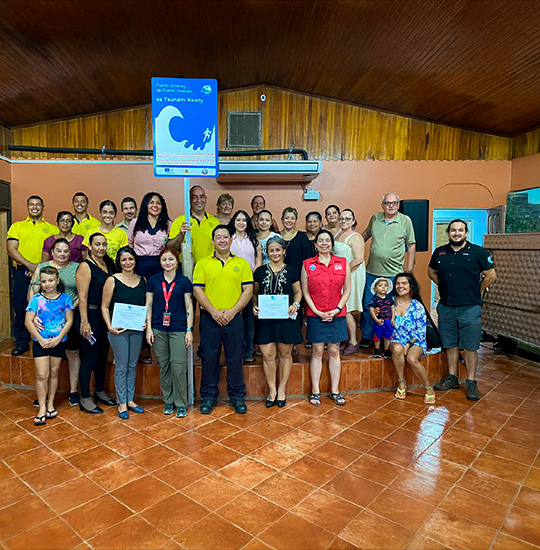

The Atmospheric Chemistry Laboratory of the School of Chemistry carries out volcanic surveillance: rainwater, rivers and thermal lagoons and the quality of the air breathed in the vicinity of volcanoes. The aim of this is to inform the population that could be affected by possible volcanic eruptions and by the emanation of gases and aerosols.
The chemist José Pablo Sibaja Brenes, director of the Laboratory of Atmospheric Chemistry, was awarded a prize by the Costa Rican College of Chemists for his contributions to the study of gaseous emissions from the country's volcanoes and the monitoring of particles from Saharan dust.
Go to websiteThe School of Surveying, Land Registry and Geodesy deals with the study and conservation of the environment, with a particular emphasis on hill surveys. This work contributes to improving the definition of east, north and height coordinates in current cartographic projection.
Go to websiteThe School of Biological Sciences has been working with crocodiles for over 35 years, studying their population structure, their habitat and the management of human-crocodile conflict in different areas of the country. Bacteria are also being studied in the mouths and cloacas of these reptiles, as well as determining their antibiotic resistance profiles, in conjunction with the School of Veterinary Medicine and the Regional Institute for the Study of Toxic Substances (IRET).
Crocodile populations have increased considerably due to the real estate boom near rivers and coasts and the greater availability of food for the species.
Go to website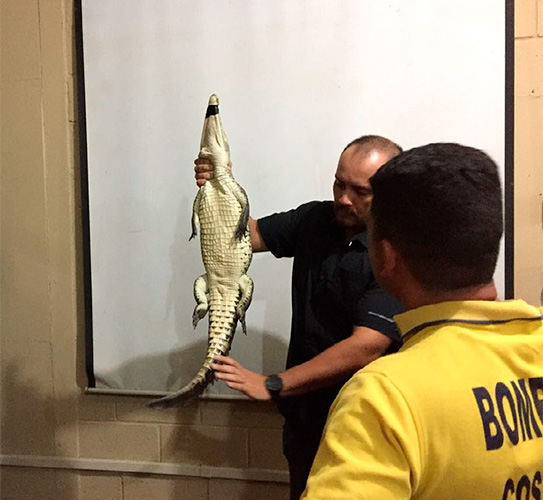
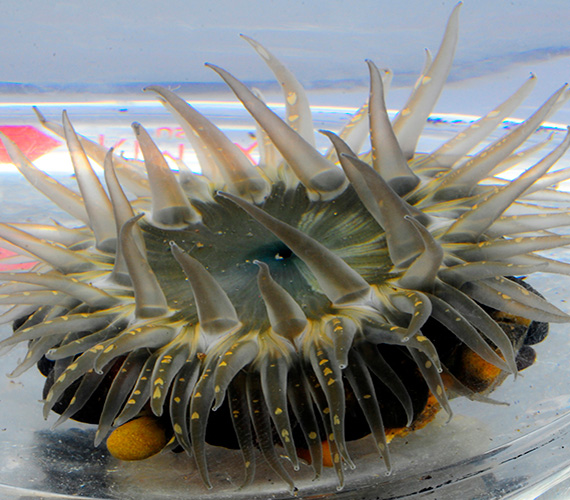
The FCEN is carrying out cutting-edge biotechnology projects. It has a Biochemistry and Protein Biotechnology Laboratory (LBBP), whose objective is to carry out research that allows for the detection, purification and characterization of peptide molecules (linear chains of amino acids) with potential activity for the development of biotechnological applications based on Costa Rican biodiversity.
Anthopleura nigrescens: an anemone from the Pacific Ocean, from which Dr. Javier Alvarado Mesén, coordinator of the Biochemistry and Protein Biotechnology Laboratory, together with other collaborators, isolated and characterized nigrelisin, a protein that forms pores in biological membranes.
The pore-forming activity of nigrelisin gives it potential for use in biotechnological applications, such as the design of therapeutic drugs directed against undesirable cells such as cancer cells.
Go to websiteModel obtained from nigrelisin.
Discovered and named by the scientist Javier Alvarado Mesén. Coordinator of the Biochemistry and Protein Biotechnology Laboratory.
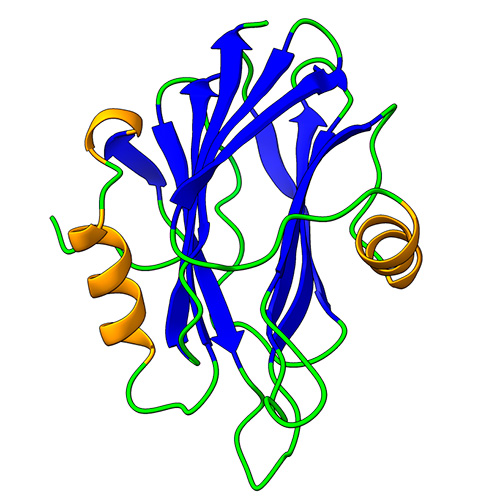
The School of Mathematics leads research in the area of Numerical Analysis for Partial Differential Equations. Efficient numerical methods have been designed to solve linear and non-linear problems in continuum mechanics using the virtual mixed finite element method. Recent techniques have been studied that allow improvements to previously established methods to be made, such as the substitution of Hilbert spaces for Banach spaces, which relaxes the restrictions imposed on the schemes and produces more natural and simple procedures.
Go to website
Scientist Javier Alvarado Mesén in the Biochemistry and Protein Biotechnology Laboratory, with student Pamela Ross Hernández, of industrial bioprocesses, quantifying the protein.
The Faculty of Exact and Natural Sciences (FCEN) is preparing for the Industrial Revolution 4.0, with initiatives such as that led by the School of Computer Science from the Digital Image Processing Laboratory, in which methods and algorithms for digital image processing are developed, using techniques and models based on computer vision and artificial intelligence, to improve their quality or facilitate the search for information.
Through the Oceanography and Coastal Management Laboratory and the Regional Oceanographic Information Service of the Physics Department, the scientific team is leading the detailed analysis of the microbial and oceanographic processes associated with the deep regions of the Pacific Ocean where oxygen is scarce.
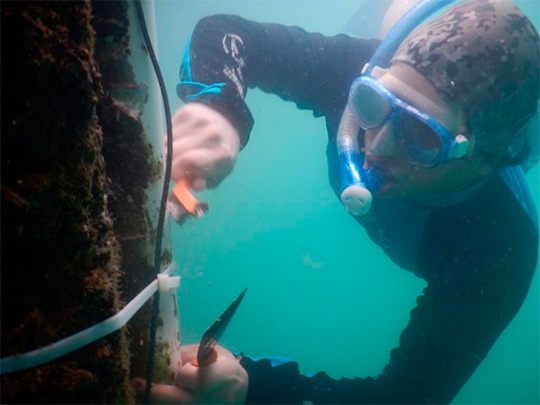
For more information, please visit the following links:












